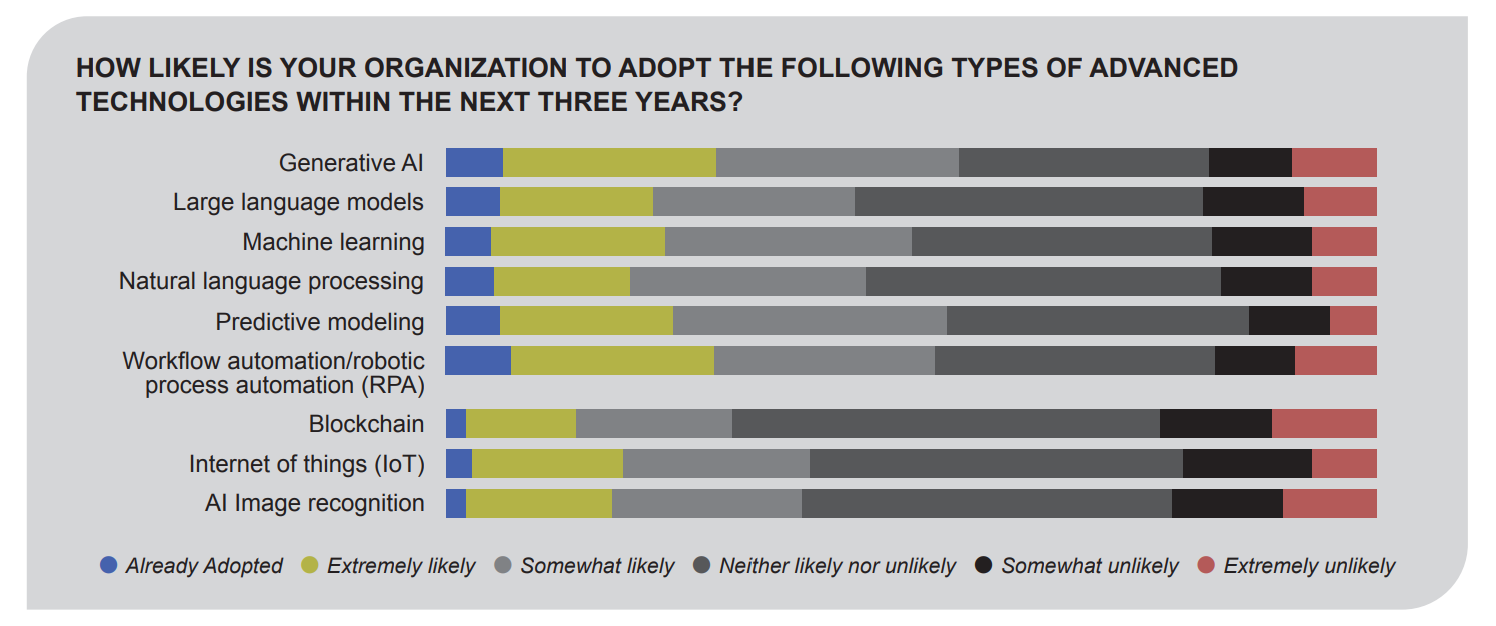AI can get risk managers “to a higher level” says risk tech expert

Airmic to publish first-of-a-kind report into the use of technology among UK risk managers.
The adoption of generative artificial intelligence (gen AI) within the risk management profession is moving much faster than people realise and is close to the tipping point where it becomes widely used, according to Patrick O’Neill, consultant in risk management information systems (RMIS) and co-author of a forthcoming Airmic study into RMIS adoption in the UK.
“We’re still at the point where not a lot of people are doing it but most people understand the capabilities and the need to do it,” he explains. “People understate the speed of change. It’s going to happen fast.”
US survey results
Patrick is president and founder of Redhand Advisors based in Georgia, USA, which publishes an annual report examining the RMIS market predominately in the United States. Its latest report, published in May, saw a marked uptick in plans for implementing gen AI among the organisations surveyed.
For example, while only 1% of risk managers report that gen AI is “fully implemented” within their organisation, 11% are running pilots and 6% are actively building their capability. Meanwhile, over half of risk professionals surveyed anticipate adopting gen AI over the next three years.
 Source: 2025 RMIS Report
Source: 2025 RMIS Report
One of the historic barriers to faster adoption has been the limited availability of integrated AI solutions. “Many organisations don’t know where to start and so they’re not going to buy standalone systems. They want these things integrated into their core systems,” observes Patrick. “Now we’re starting to see the integrated solutions emerge and it will be easier for clients to adopt.”
UK report to launch at Airmic conference
Patrick is working with Airmic on a comprehensive report, sponsored by Riskonnect, on the RMIS landscape in the UK. The first-of-its-kind report, which will be published at Airmic’s annual conference in June, is based on surveys of Airmic members and RMIS vendors.
It will present a unique opportunity for Airmic members to benchmark their own RMIS maturity against the wider UK picture. It will also help members navigate the diverse RMIS vendor market and to understand the trends shaping the future of risk tech.
While risk professionals in the US and the UK can garner similar benefits from RMIS adoption, the UK survey is likely to highlight significant differences between the two markets in terms of maturity and legacy systems, notes Patrick.
Strategic advantage
Overall, the use of AI and RMIS more generally has the potential to change the shape of the risk management profession, Patrick believes, and those that don’t keep pace with the market may lose competitiveness.
“Risk managers realise that if they don’t start using these more advanced technologies then at some point, they’re not going to be doing their job properly anymore. I already have risk professionals telling me their bosses are requesting an AI strategy, but you can’t just turn these things on overnight.”
Overall, however, the greater use of advanced technologies presents a strong opportunity for risk professionals to take on a more strategic role within their companies. “AI frees you up. The system can support much of the analysis for you and so I think it can get risk managers to a higher level. They will be solving the problems instead of looking for problems,” he says.
First steps
Organisations that are considering how to start on their RMIS and AI strategy should start with identifying the ideal use cases within their organisation, Patrick advises. “You need to ask, ‘how can we make quicker decisions, get better data and make smarter insights?’ Only when you’ve done that, can you start to figure out which are the right tools to invest in.
“A lot of people do it the other way round – they select the technology and then try and find a use case to fit with it. That’s when they run into frustration because they thought they had bought a great tool but in reality, it didn’t meet their specific needs. There’s a lot of choice in the marketplace for a reason.”
